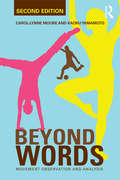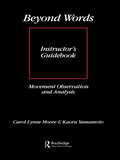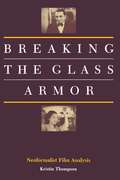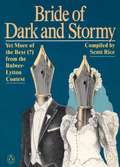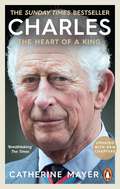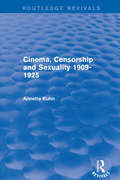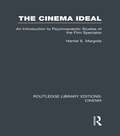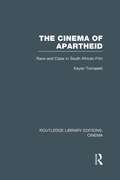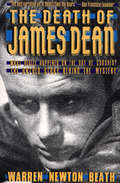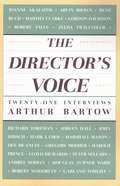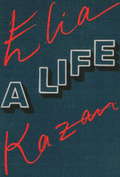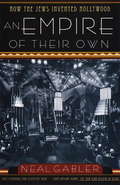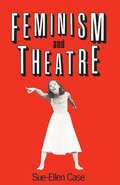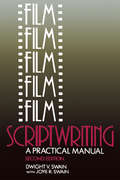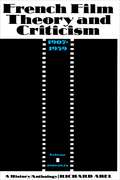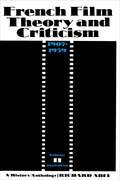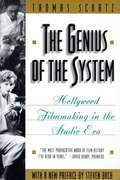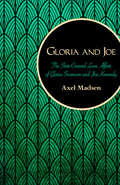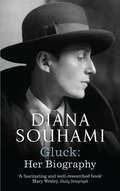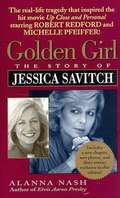- Table View
- List View
Beyond Words: Movement Observation and Analysis
by Carol-Lynne Moore Kaoru YamamotoBeyond Words presents a range of illuminating approaches to examining every day social interactions, to help the reader understand human movement in new ways. Carol-Lynne Moore and Kaoru Yamamoto build on the principles that they expertly explored in the first edition of the book, maintaining a focus on the processes of movement as opposed to discussions of static body language. The authors combine textual discussion with a new set of website-hosted video instructions to ensure that readers develop an in-depth understanding of nonverbal communication, as well as the work of its most influential analyst, Rudolf Laban. This fully-revised, extensively illustrated second edition includes a new introduction by the authors. It presents a fascinating insight into this vital field of study, and will be an invaluable resource for scholars and practitioners in many activities, from performing and martial arts, athletics, to therapeutic and spiritual practices, conflict resolution, business interactions, and intercultural relations.
Beyond Words: Instructor's Manual
by Carol-Lynne Moore Kaoru YamamotoThis guidebook is designed to facilitate the use of "Beyond Words" materials. By drawing on their own teaching experiences, the authors offer suggestions for attaining teaching/learning goals, and for overcoming difficulties in using the movement observation and analysis programme. Many of the creative adaptations described come from individuals at different institutions who tested "Beyond Words" while it was being developed. It is not intended, therefore, as a prescriptive document, but rather as a guide which provides many alternative ways of utilizing "Beyond Words", and which leaves the rest to the instructor.
Blue Tights
by Rita Williams-GarciaGrowing up in a city neighborhood, fifteen-year-old Joyce, unsure of herself and not quite comfortable with her maturing body, tries to find a place to belong and a way to express herself through dance.
Breaking the Glass Armor
by Kristin Thompson"Classical works have for us become covered with the glassy armor of familiarity," wrote Victor Shklovsky in 1914. Here Kristin Thompson "defamiliarizes" the reader with eleven different films. Developing the technique formulated in her Eisenstein's Ivan the Terrible (Princeton, 1981), she clearly demonstrates the flexibility of the neoformalist approach. She argues that critics often use cut-and-dried methods and choose films that easily fit those methods. Neoformalism, on the other hand, encourages the critic to deal with each film differently and to modify his or her analytical assumptions continually. Thompson's analyses are thus refreshingly varied and revealing, ranging from an ordinary Hollywood film, Terror by Night, to such masterpieces as Late Spring and Lancelot du Lac. She proposes a formal historical way of dealing with realism, using Bicycle Thieves and The Rules of the Game as examples. Stage Fright and Laura provide cases in which the classical cinema defamiliarizes its own conventions by playing with audience expectations. Other chapters deal with Tati's Les Vacances de Monsieur Hulot and Play Time and Godard's Tout va bien and Sauve qui peut (la vie). Although neoformalist analysis is a rigorous, distinctive approach, it avoids extensive specialized vocabulary and esoteric concepts: the essays here can be read separately by those interested in the individual films. The book's overall purpose, however, goes beyond making these particular films more accessible and intriguing to propose new ways of looking at cinema as a whole.
Bride of Dark And Stormy: Yet More of the Best (?) from the Bulwer-lytton Contest
by Scott RiceIt's not easy to write bad fiction. On purpose. Scott Rice, organizer of the Bulwer-Lytton contest, asks people to do just that. Here are the best opening sentences of the worst hypothetical novels never written. <P><P> Just try to understand the 1987 winner: <P><P>"The notes Matted skyward as the sun rose over the Canada geese, feathered rumps mooning the day, webbed appendages frantically pedaling unseen bicycles in their search for sustenance, driven by cruel Nature's maxim, 'ya wanna eat, ya gotta work,' and at last I knew Pittsburgh." <P><P> But Bride of Dark and Stormy is not just a compilation. Now Scott Rice has added his own advice on how to write "successful" fiction in the Bulwer-Lytton mode, making this a perverse how-to book, full of rotten advice and worse examples.
Charles: The Heart of a King
by Catherine MayerThe Sunday Times Top Ten Bestseller'Breathtaking' The Times'[The book that] made headlines around the world.' IndependentThe former Prince of Wales has lived his whole life in the public eye, yet he remains an enigma. He was born to be king, but he aims much higher. A landmark publication, Charles: The Heart of a King reveals Charles in all his complexity: the passionate views that mean he will never be as remote and impartial as his mother; the compulsion to make a difference and the many and startling ways in which the Prince and now King of the United Kingdom and fifteen other realms has already made his mark.The book offers fresh and fascinating insights into the first marriage that did so much to define him and an assessment of his relationship with the woman he calls, with unintended accuracy, his 'dearest wife': Camilla, now Queen Consort. We see Charles as a father and a friend, a serious figure and a joker. Life at court turns out to be full of hidden dangers and unexpected comedy.Now, updated and revised with a new preface and two new chapters - covering details of Harry and Meghan's exit and its implications, the cash-for-honours scandal, Prince Andrew, and more - this significant study reveals a monarchy threatened and a man in sight of happiness yet still driven by anguish and a remarkable belief system, a charitable entrepreneur, activist, agitator and avatar of the Establishment who just as often tilts against it.Based on multiple interviews with his friends and courtiers, palace insiders and critics, and rare access to Charles himself, before his kingship, this biography explores his philanthropy and his compulsive interventionism, his faith, his significant impact on politics and the philosophy that means when he seeks harmony he sometimes creates controversy.Gripping, at times astonishing, often laugh-out-loud, this is a royal biography unlike any other.'A must-read ... this important book is nothing short of a manual to our future King's world-view' GQ'A sustained piece of higher journalism' Independent
Child Star: An Autobiography
by Shirley Temple BlackShirley Temple writes of her life and accomplished career.
Cinema, Censorship and Sexuality 1909-1925 (Cinema And Society Ser.)
by Annette KuhnFirst published in 1988. This book shows how censorship as a set of institutions, practices and discourses was involved in the struggle over the nature of cinema in the early twentieth century. It also reveals the part played in this struggle by other institutions, practices and discourses — for example ‘new’ knowledge about sexuality and organisations devoted to the promotion of public morality. Instead of censorship simply being an act of prohibition by a special institution, this work reveals the issues at work were far more complex and contradictory — opening up critical scrutiny and challenging assumptions. This title will be of interest to students of media and film studies.
The Cinema Ideal: An Introduction to Psychoanalytic Studies of the Film Spectator (Routledge Library Editions: Cinema)
by Harriet E. MargolisThis study explores the model derived from Freudian and Lacanian psychoanalysis, via Marxism and semiotics, of looking at film. It retraces the steps of film theory from ideological criticism of the late ‘60s to spectator studies in 1988 when the book was originally published. Psychoanalysis enables a discussion of the cinema’s role as a social and political force and this book enters a discourse of the politics of representation. Reconstructing discussion of basic issues, the book addresses our instincts and defences in reacting to cinema, the similarity between mental processes and cinematic technique, narrative techniques and the ‘cinematic apparatus’. Importantly, the book concerns itself with the concept of ideology and how the filmviewing experience engages the spectator in a complex net of stimuli presenting representations of an ideal world and the effect of this within film studies.
The Cinema of Apartheid: Race and Class in South African Film (Routledge Library Editions: Cinema)
by Keyan TomaselliThis study analyses the historical development of South African cinema up to he book's original publication in 1988. It describes the films and comments on their relationship to South African realities, addressing all aspects of the industry, focusing on domestic production, but also discussing international film companies who use South Africa as a location. It explores tensions between English-language and Afrikaans-language films, and between films made for blacks and films made for whites. Going behind the scenes the author looks at the financial infrastructure, the marketing strategies, and the works habits of the film industry. He concludes with a discussion of independent filmmaking, the obstacles facing South Africans who want to make films with artistic and political integrity, and the possibilities of progress in the future. Includes comprehensive bibliography and filmography listing all feature films made in South Africa between 1910 and 1985 together with documentary films by South Africans, non-South Africans, and exiles about the country.
The Death of James Dean
by Warren Newton BeathWith extensive research, this account of the Hollywood star and his legion of fans offers “the best narrative yet of Dean’s final ten hours” (San Francisco Examiner). Just before sunset on September 20, 1955, James Byron Dean’s Porsche 550 Spyder collided with Donald Gene Turnupseed’s Ford Tudor on California Highway 46. At age twenty-four, America’s newest screen idol was dead. But what really happened? Drawing on original documents, including the coroner’s inquest and other previously unpublished material, author Warren Newton Beath provides a painstakingly accurate reconstruction of Dean’s final hours and tragic death. In addition, Beath explores Dean’s life and his enduring status as a cultural icon, including Elvis Presley’s worship of him; Hitchcock’s use of Highway 46 in the famous crop-dusting scene in North by Northwest; death threats against Giant director George Stevens if he dared excise a single frame of Deans’ final performance; and many more fascinating facts about the enigmatic screen legend. Beath’s definitive account concludes with a memorable portrait of the James Dean cult, a strangely moving record of his posthumous life in the hearts of his adoring fans.
The Director's Voice
by Arthur BartowForemost stage directors describe their working process: JoAnne Akalaitis, Arvin Brown, René Buch, Martha Clarke, Gordon Davidson, Robert Falls, Zelda Fichandler, Richard Foreman, Adrian Hall, John Hirsch, Mark Lamos, Marshall W. Mason, Des McAnuff, Gregory Mosher, Harold S. Prince, Lloyd Richards, Peter Sellars, Andrei Serban, Douglas Turner Ward, Robert Woodruff, and Garland Wright.
Don't Bend Over in the Garden, Granny, You Know Them Taters Got Eyes
by Lewis GrizzardThis time Lewis Grizzard has gone and done it--written a book about sex, as seen through his bespectacled, ironic squint. He tells us why Junior Leaguers don't do it in groups, why Baptists won't do it standing up, and why Richard Nixon never did it, among other things. Other books by this author are available in this library.
Elia Kazan: A Life
by Elia Kazan"This is the best autobiography I've read by a prominent American in I don't know how many years. It is endlessly absorbing and I believe this is because it concerns a man who is looking to find a coherent philosophy that will be tough enough to contain all that is ugly in his person and his experience, yet shall prove sufficiently compassionate to give honest judgment on himself and others. Somehow, the author brings this off. Elia Kazan: A Life has that candor of confession which is possible only when the deepest wounds have healed and honesty can achieve what honesty so rarely arrives at--a rich and hearty flavor. By such means, a famous director has written a book that offers the kind of human wealth we find in a major novel." --Norman Mailer. In this amazing autobiography, Kazan at seventy-eight brings to the undiluted telling of his story--and revelation of himself--all the passion, vitality, and truth, the almost outrageous honesty, that have made him so formidable a stage director (A Streetcar Named Desire, Death of a Salesman, All My Sons, Cat on a Hot Tin Roof, Tea and Sympathy), film director (On the Waterfront, East of Eden, Gentleman's Agreement, Splendor in the Grass, Baby Doll, The Last Tycoon, A Face in the Crowd), and novelist (the number-one best-seller The Arrangement.) Kazan gives us his sense of himself as an outsider (a Greek rug merchant's son born in Turkey, an immigrant's son raised in New York and educated at Williams College). He takes us into the almost accidental sojourn at the Yale Drama School that triggered his commitment to theatre, and his edgy, exciting apprenticeship with the new and astonishing Group Theatre, as stagehand and stage manager--and as actor (Waiting for Lefty, Golden Boy) ... his first nervous and then successful attempts at directing for theatre and movies (The Skin of Our Teeth, A Tree Grows in Brooklyn) ... his return to New York to co-found the Actors Studio (and his long and ambivalent relationship with Lee Strasberg) ... his emergence as premier director on both coasts. With his director's eye for the telling scene, Kazan shares the joys and complications of production, his unique insights on acting, directing, and producing. He makes us feel the close presence of the actors, producers, and writers he's worked with--James Dean, Marlon Brando, Tennessee Williams, Vivien Leigh, Tallulah Bankhead, Sam Spiegel, Darryl Zanuck, Harold Clurman, Arthur Miller, Budd Schulberg, James Baldwin, Clifford Odets, and John Steinbeck among them. He gives us a frank and affectionate portrait of Marilyn Monroe. He talks with startling candor about himself as husband and--in the years where he obsessively sought adventure outside marriage--as lover. For the first time, he discusses his Communist Party years and his wrenching decision in 1952 to be a cooperative witness before HUAC. He writes about his birth as a writer. The pace and organic drama of his narrative, his grasp of the life and politics of Broadway and Hollywood, the keenness with which he observes the men and women and worlds around him, and, above all, the honest with which he pursues and captures his own essence, make this one of the most fascinating autobiographies of our time.
An Empire of Their Own: How the Jews Invented Hollywood
by Neal GablerA provocative, original, and richly entertaining group biography of the Jewish immigrants who were the moving forces behind the creation of America's motion picture industry. The names Harry Cohn, William Fox, Carl Laemmle, Louis B. Mayer, Jack and Harry Warner, and Adolph Zucker are giants in the history of contemporary Hollywood, outsiders who dared to invent their own vision of the American Dream. Even to this day, the American values defined largely by the movies of these émigrés endure in American cinema and culture. Who these men were, how they came to dominate Hollywood, and what they gained and lost in the process is the exhilarating story of An Empire of Their Own.
Feminism and Theatre
by Sue-Ellen CaseThis classic study is both an introduction to, and an overview of, the relationship between feminism and theatre.
Film Scriptwriting: A Practical Manual
by Dwight V Swain Joye R SwainThis second edition of the widely acclaimed Film Scriptwriting is a truly practical manual for the working writer. It provides all the clear, step-by-step guidance you need to script both fact and feature film and video - from getting and developing ideas to the writing of master scene or shooting script. Featured in this new edition are annotated excerpts from some of today's most successful films, selected to point up principles and techniques discussed. Interviews with working film specialists reveal the things professional directors, producers, story editor, and analysts look for in appraising the scripts that come across their desks.
Following the Comedy Trail
by Leon SmithDetective Leon Smith, a 30-year veteran of the Los Angeles Police Department, guides us on a nostalgic journey to famous LAUREL AND HARDY and OUR GANG movie locations, as well as other famous Hollywood film locations. His investigations reveal exact addresses of these historical sites and feature his present-day photographs along with production stills showing how the locations appeared in the original film. "I LOVE THESE BOOKS! AND I'LL BET THAT ANYONE WHO CARES ABOUT LAUREL AND HARDY, OUR GANG AND HOLLYWOOD HISTORY WILL FEEL THE SAME WAY." Leonard Maltin"LEON SMITH'S JOURNEY BACK TO THE SITES OF MANY OF THE EPISODES IN THE LAUREL AND HARDY AND OUR GANG CANON IS AN EXTENSION OF A PROFESSIONAL CURIOSITY INTO THE KNOWLEDGE THAT THE FACT OF PLACE EVOKES THE MEMORY OF EXPERIENCE. IN THE CASE OF 'FOLLOWING THE COMEDY TRAIL' THE RECOLLECTION IS OF SHEER PLEASURE." Lawrence Christon The Los Angeles Times "NOW THIS IS A GORGEOUS LABOR OF LOVE, RICH WITH PHOTOGRAPHS OF THE SITES AS THEY NOW APPEAR..." Don Thompson, Editor Movie Collector's World
French Film Theory and Criticism, Volume 1: A History/Anthology, 1907-1939. Volume 1: 1907-1929
by Richard AbelThese two volumes examine a significant but previously neglected moment in French cultural history: the emergence of French film theory and criticism before the essays of André Bazin. Richard Abel has devised an organizational scheme of six nearly symmetrical periods that serve to "bite into" the discursive flow of early French writing on the cinema. Each of the periods is discussed in a separate and extensive historical introduction, with convincing explications of the various concepts current at the time. In each instance, Abel goes on to provide a complementary anthology of selected texts in translation. Amounting to a portable archive, these anthologies make available a rich selection of nearly one hundred and fifty important texts, most of them never before published in English.
French Film Theory and Criticism, Volume 2: A History/Anthology, 1907-1939. Volume 2: 1929-1939
by Richard AbelThese two volumes examine a significant but previously neglected moment in French cultural history: the emergence of French film theory and criticism before the essays of Andr Bazin. Richard Abel has devised an organizational scheme of six nearly symmetrical periods that serve to "bite into" the discursive flow of early French writing on the cinema. Each of the periods is discussed in a separate and extensive historical introduction, with convincing explications of the various concepts current at the time. In each instance, Abel goes on to provide a complementary anthology of selected texts in translation. Amounting to a portable archive, these anthologies make available a rich selection of nearly one hundred and fifty important texts, most of them never before published in English.
The Genius of the System
by Thomas SchatzAt a time when the studio is making a stunning comeback, film historian Thomas Schatz provides an indispensable account of Hollywood's tradional blend of business and art. This book lays to rest the persistent myth that businesspeople and producers stifle artistic talent and reveals instead the genius of a system of collaboration and conflict. Working from industry documents, Schatz traces the development of house styles, the rise and fall of careers, and the making-and unmaking-of movies, from Frankenstein to Spellbound to Grand Hotel. Richly illustrated and highly readable, The Genius of the System gives the definitive view of the workings of the Old Hollywood and the foundations of the New.
Gloria and Joe
by Axel MadsenThe ultimate Hollywood story revealed: the sizzling relationship between Joseph Kennedy, patriarch of America's most influential political family, and Gloria Swanson, one of the most prominent silent film stars of her day. Gloria and Joe were in love with each other and with the movies, especially Queen Kelly, which completed the real-life ménage à trois. Starring along with the star of the screen and the Boston Brahman in this exposé are Erich von Stroheim, Kennedy's wife Rose, Swanson's husband, and a cast of colorful hangers-on. Madsen recreates their love, scandal, and world, which in its extravagance and intrigue has never been surpassed.
Gluck: Her Biography
by Diana SouhamiAs stubborn as she was gifted, as fierce as she was tender, and notorious for her mannish dress that was provocative and chic in equal measure, Gluck was an artist and a rebel. Born Hannah Gluckstein in 1895 into the family that founded the J. Lyons & Co. catering company, she had passionate affairs with society women such as Constance Spry and exhibited her portraits, flower paintings and landscapes in 'one man' shows that captivated the beau monde of the 1920s and 30s. But Gluck's success was never unmixed with controversy: at the height of her fame she stopped working, caught in a bitter campaign over the quality of artists' materials, and her personal life was rarely less than torrid. In Gluck Diana Souhami captures this paradoxical, talented and unusual woman in all her complexity.
Golden Girl, The Story of Jessica Savitch
by Alanna NashShe was a commercial for the American dream. Beautiful, blond, a network news anchorwoman by the age of thirty, Jessica Savitch was a double role model--a brilliant journalistic pioneer and a Grace Kelly for the 1980s. But beneath the surface of perfection lay a shattered life. Here is a harrowing tale that explores the tragedies that haunted Savitchs personal life, including the early death of her father, the suicide of her second husband, wrenching drug dependency, neurosis, and the horrifying journey of self-sabotage and damaging personal relationships that ended in early death. Based on private diary entries, letters, and more than 300 interviews with Savitch's friends, lovers, psychiatrists, and colleagues, Golden Girl sets the record straight on both her public and private lives, and pays tribute to a woman who beat overwhelming odds to triumph in her profession.
Gracie: A Love Story
by George BurnsDelineating the intelligent woman behind the comedic facade, Burns here tells a true-love story of his marriage to Gracie Allen, who died in 1964.
